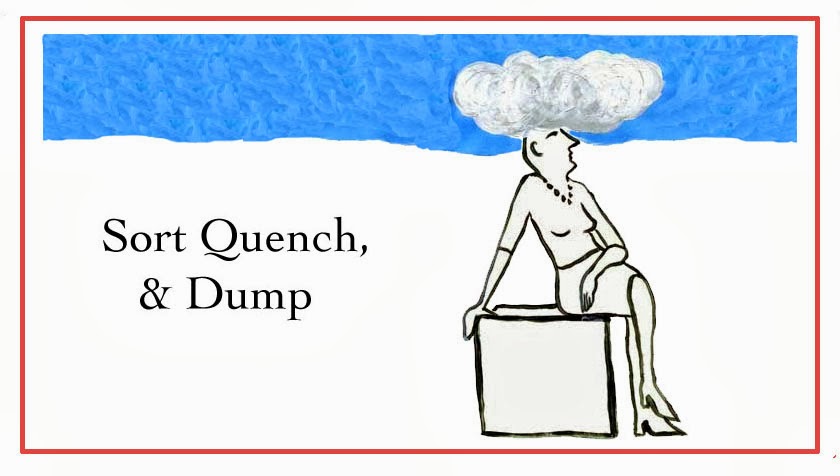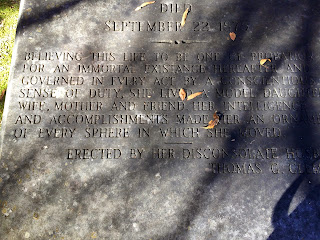We are driving south, toward the southernmost point of our journey, which will be Waycross, Georgia, the gateway to the Okefenokee Swamp, the swamp I have longed to visit, the swamp I have dreamt of, the swamp I have imagined, the swamp inhabited by a witty and wise Possum, a cigar-smoking Alligator, and an owl who speaks in dark Gothic script. On the way we pass cotton fields, lots of cotton fields. If you live in southern Georgia cotton fields, fields of cotton, are not an exotic sight. If you live outside NYC, they are. So I want to stop the car and walk into a field of cotton and actually pick some cotton and extract the cottonseed. CSB pulls over, and as I get out, he warns me about: rattlesnakes, fire ants, and crackers with guns. He stays in the car and watches as I cross the ditch and wander into the cotton.

Many years ago I read that Aldous Huxley* had a specially constructed traveling trunk in which he kept the entire set of the Encyclopedia Britannica. Presumably it was the iconic 11th edition, all 29 volumes. Those were the halcyon days of porters. Because Huxley could not imagine traveling without that wonderful source of knowledge, that repository of obscure facts and incontrovertible argument-winner. I love this detail because I too cannot imagine traveling without having the population of Macon, Georgia or the number of bales of cotton produced by South Carolina (400,000) or the symptoms of lupus, as suffered by Flannery O’Connor, at my fingertips.
I cannot verify Huxley’s bespoke trunk anywhere. I have looked in all the obvious places (the encyclopedia) and some less obvious. I would give quite a lot to find the source. I would be sad to learn it was Somerset Maugham who had the bespoke trunk, but I would accept the fact gracefully.
 Unlike Aldous Huxley, or whoever it was, we do not have to carry around 144 pounds of information and develop incurable curvature of the spine, because we have iPhones and on my smart talking pink device I can look up ….almost anything. One of the many delights we discovered on our road trip was that in the Wikipedia entry for more or less every town in American, along with the demographics, geography and history, there is a section called: Notable People. All sorts of small towns have all sorts of notable people. True, most of them are high school football players. Then there are the surprises.
Unlike Aldous Huxley, or whoever it was, we do not have to carry around 144 pounds of information and develop incurable curvature of the spine, because we have iPhones and on my smart talking pink device I can look up ….almost anything. One of the many delights we discovered on our road trip was that in the Wikipedia entry for more or less every town in American, along with the demographics, geography and history, there is a section called: Notable People. All sorts of small towns have all sorts of notable people. True, most of them are high school football players. Then there are the surprises.Among the notable residents, past and present, of Waycross, Georgia, I doubt there is anyone quite as intriguing as Sonora Webster Carver, the Horse Diver.

I very much hope I am not the only person who has never before heard of – or even conceived of - horse diving as a career option. It was in 1923 that Sonora ((1904-2003) responded to an ad seeking a horse diver, placed by William “Doc” Carver. He signed her on and soon she was the star of the show: riding a horse up to a sixty-foot tower and then hanging on for dear as it dove into a puddle below.
 Sonora soon married Doc’s son, Al, who took over the show and brought it to the Atlantic City Pier. That was where Sonora was blinded, when she hit the water off balance. But she kept right on diving with her horse for another 11 years.
Sonora soon married Doc’s son, Al, who took over the show and brought it to the Atlantic City Pier. That was where Sonora was blinded, when she hit the water off balance. But she kept right on diving with her horse for another 11 years. It seems worth noting that she lived to be 99 years old.
And now it is time to reignite my torrid relationship with William Shatner.

*Based on the number of books she owned by each author, Aldous Huxley was my paternal grandmother’s second favorite writer, between H.G. Wells, #1 by a long margin, and Tagore at #3.



























